The USS George H.W. Bush (CVN-77) is now the first U.S. Navy supercarrier to have a complete dedicated Unmanned Air Warfare Center (UAWC). The new control room is set to be the nerve center on the flattop for operating future drones, including uncrewed MQ-25 Stingray tankers and carrier-based Collaborative Combat Aircraft (CCA). The Navy plans to eventually add UAWCs to all of its Nimitz and Ford class carriers.
Naval Air Systems Command (NAVAIR) announced the completion of George H.W. Bush‘s UAWC, which it said occurred “recently,” in a press release earlier today.
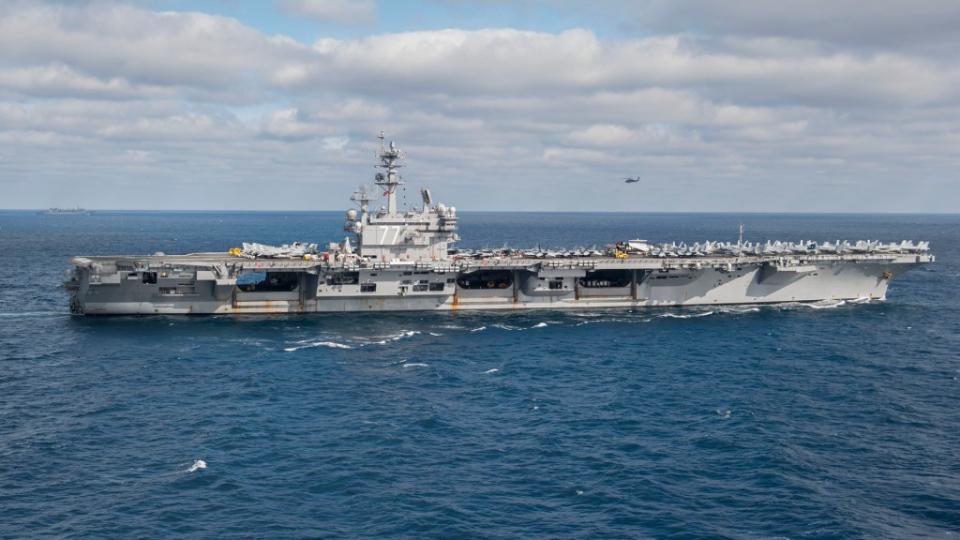
“The CVN-based control room, known as the UAWC, includes software and hardware systems that make up the first fully operational and integrated Unmanned Carrier Aviation Mission Control System (UMCS) MD-5E Ground Control Station (GCS),” according to the release. The “UMCS is the system-of-systems” and the MD-5E “developed by the Navy, includes Lockheed Martin’s Skunk Works Multi Domain Combat System (MDCX), the power behind the GCS, along with additional supporting equipment and hardware,” it continues.
The “UMCS team worked with multiple program offices, systems commands and shipyards to integrate the UAWC into existing networks and the carrier architecture,” today’s NAVAIR release adds. “The Naval Air Warfare Center Aircraft Division Webster Outlying Field Alteration Installation Team, AirWorks, and Lockheed Martin assisted with the coordination and physical installation of the UAWC while Naval Sea Systems Command, Norfolk Naval Shipyard, and CVN 77 organized schedules, equipment, and logistics.”
A picture NAVAIR released of the George H.W. Bush‘s new UAWC, seen below, shows a pair of operator stations with arrays of monitors, tablet-like devices, and other computer hardware. The stations look identical to the ones seen in a previously released picture of components of an MD-5 series GCS. The general look is also well in line with other known uncrewed GCS designs, like the ones the U.S. Air Force has used over the years to operate MQ-1 Predators and MQ-9 Reapers.
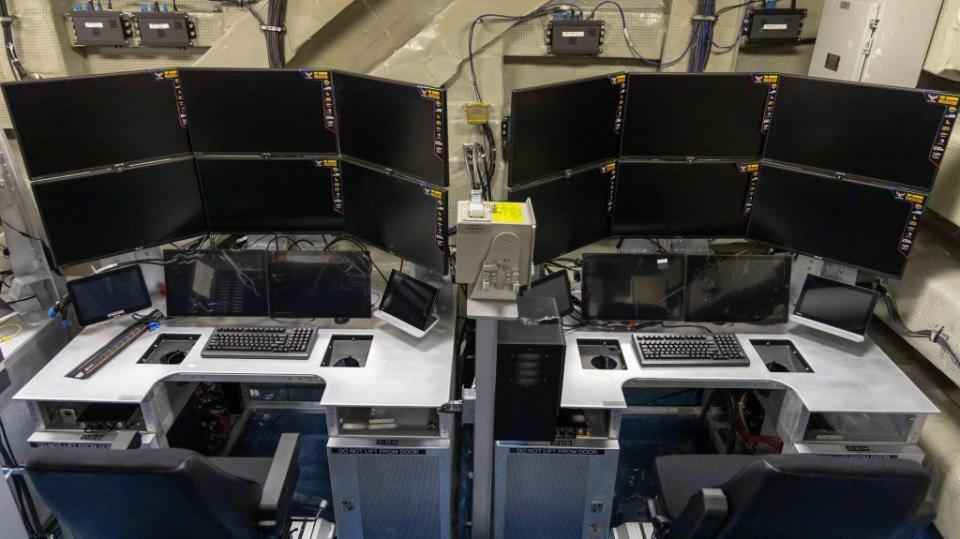
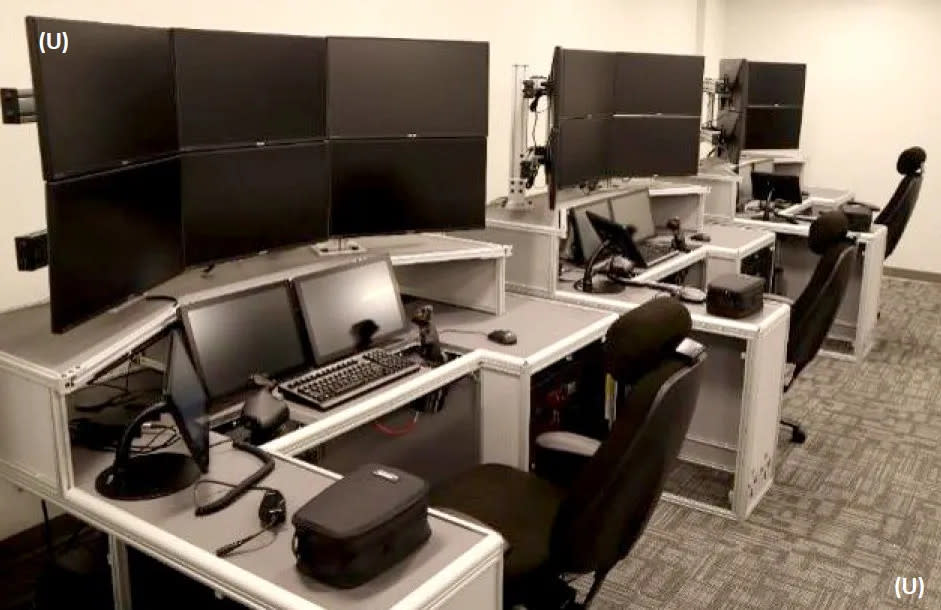
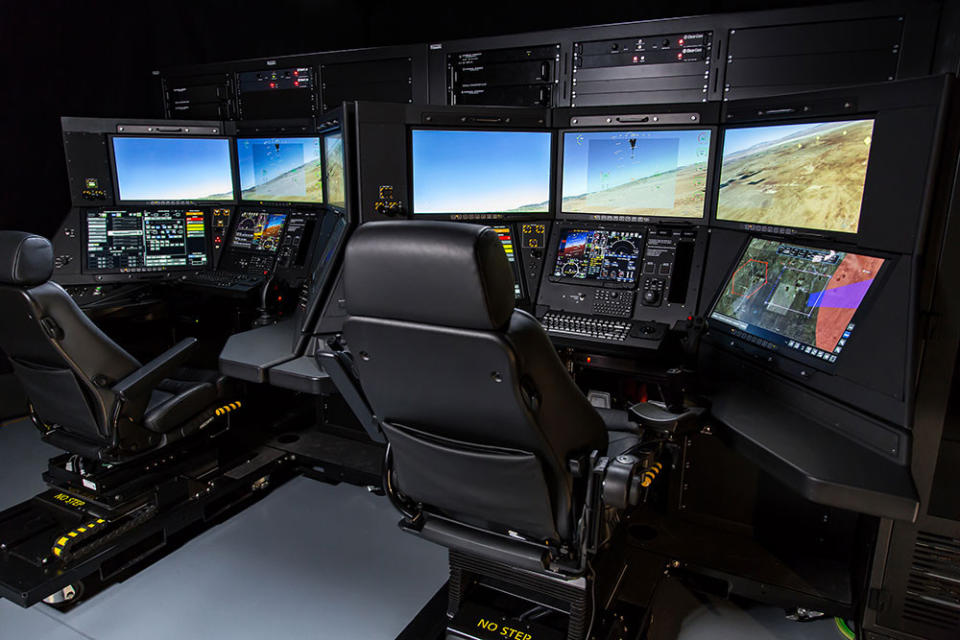
The MD-5 family of GCSs has been in development since at least the early 2010s adjacent to the Navy’s abortive Unmanned Carrier-Launched Airborne Surveillance and Strike (UCLASS) program. UCLASS was supplanted by the less ambitious Carrier-Based Aerial-Refueling System (CBARS) program that led to MQ-25.
The stated primary purposes of the MQ-25 today are to help extend the reach of the carrier air wing and to eliminate the current need to use F/A-18E/F Super Hornet fighters in the tanker role, according to the Navy. The Stingrays will also have a secondary intelligence, surveillance, and reconnaissance (ISR) capability and there have been discussions about further expanding their roles, including as stand-off strike platforms.

The Navy has already been working for years now to establish a training pipeline for MQ-25 operators using facilities ashore. On land and at sea testing of the Stingray itself is ongoing. The overall MQ-25 program has suffered significant delays and cost growth since Boeing won the CBARS competition in 2018. The original goal was to reach initial operational capability with the Stingray this year, but that has been pushed back to 2026. The Navy is still planning to eventually acquire a full fleet of 76 of the tanker drones.


When it comes to the UAWC, the Navy’s plan now is that “early next year, CVN 77 will lead the first at-sea testing of the… [control center’s] operational networks, building on initial network testing with a simulated GCS that took place in January aboard USS Abraham Lincoln (CVN 72),” according the NAVAIR release.
“This will be the first time the AVPs [Air Vehicle Pilots] from Unmanned Carrier-Launched Multi-Role Squadron (VUQ) 10 will operate the MD-5 from an aircraft carrier,” Joe Nedeau, the UMCS lead within NAVAIR’s Unmanned Carrier Aviation office, or PMA-268, said in a statement. “They will use the actual GCS hardware and software aboard CVN 77 to communicate with a simulated air vehicle in the lab” at Naval Air Station Patuxent River in Maryland.
Furthermore, “CVN 77’s UAWC lays the foundation for how the U.S. Navy will operate and control unmanned aircraft, and perhaps other unmanned vehicles, with UMCS,” Capt. Daniel Fucito, head of PMA-268, said in a statement. “These systems will initially support the MQ-25 but also future unmanned systems such as Collaborative Combat Aircraft that comprise the Air Wing of the Future.”
You can read more about the Navy’s CCAs plans, which are heavily interviewed with those of the U.S. Air Force, in more detail here. The CCAs that both services are planning to acquire are expected, at least initially, to operate closely with crewed combat jets. The two services are notably working on architectures to allow them to seamlessly exchange control of CCAs and other drones during future operations, including via the MD-5.
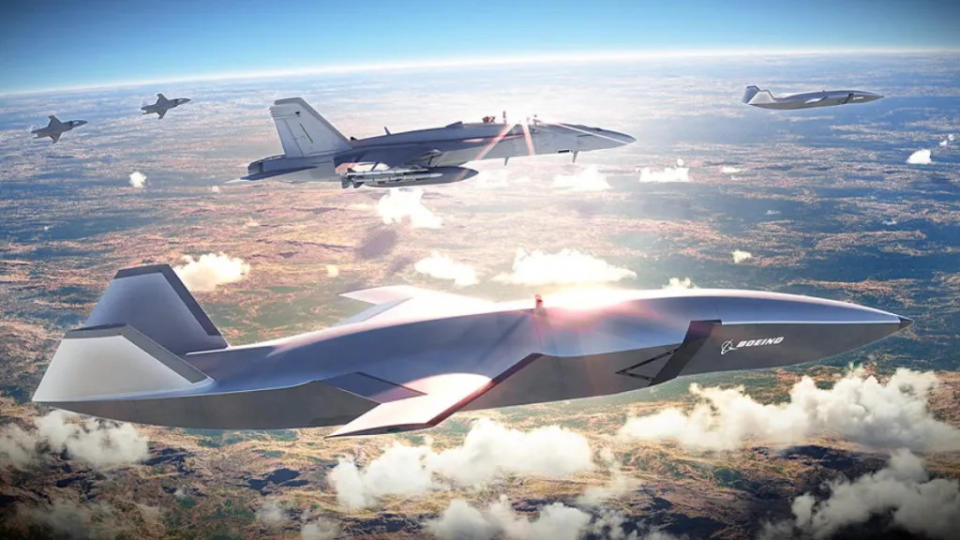
Since 2021, Navy officials have said on multiple occasions that they expect 60 percent or more of the aircraft in future carrier air wings to eventually be uncrewed.
USS Carl Vinson (CVN-70), USS Theodore Roosevelt (CVN-71), and USS Ronald Reagan (CVN-76) are next in line to get full UAWCs, starting in Fiscal Year 2025, which begins on October 1 of this year. The Navy has said in the past that at least three carriers already have elements of the MD-5 installed.
It is also possible that other Navy warships, especially its big deck amphibious assault ships, could also get UAWCs or similar control centers with a version of the MD-5 in the future. Last year, NAVAIR’s Naval Air Warfare Center Aircraft Division and the Office of Naval Research (ONR) put out a request for information on new ways to launch and recover a “high volume of low-cost aircraft” from vessels beyond aircraft carriers.
The Navy has now taken a major step forward toward its larger uncrewed naval aviation vision with the completion of the new drone control center on the USS George H.W. Bush.
Contact the author: joe@twz.com
